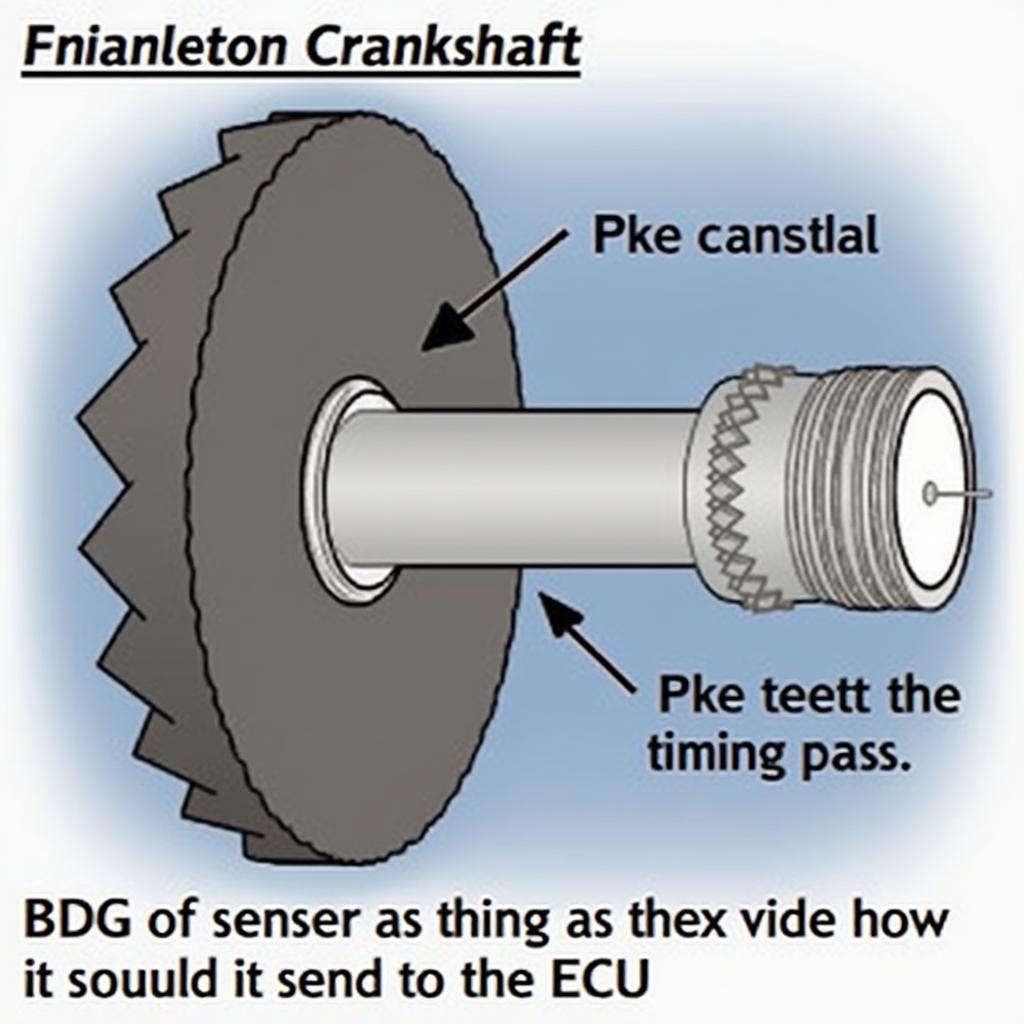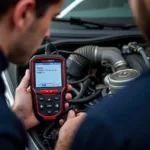The engine speed sensor, also known as the G28, plays a crucial role in the smooth operation of your engine. This small sensor provides the engine control unit (ECU) with vital information about the crankshaft speed. Based on this data, the ECU controls ignition, fuel injection, and other important engine functions.
A faulty G28 sensor can lead to a variety of issues, from starting problems to performance loss. In this article, we will take a closer look at the G28 engine speed sensor, discuss common problems, and show you solutions on how to fix them.
What is the G28 Engine Speed Sensor and How Does It Work?
The G28 engine speed sensor is an inductive proximity sensor that measures crankshaft speed. It is typically located near the flywheel or crankshaft pulley and generates a signal as a tooth of the reluctor wheel passes by it. This signal is transmitted to the engine control unit, which calculates the speed based on the frequency of the signal.
 Diagram illustrating the function of the G28 engine speed sensor
Diagram illustrating the function of the G28 engine speed sensor
Common Problems with the G28 Engine Speed Sensor
A defective G28 sensor can manifest through various symptoms, including:
- Starting Problems: The engine starts poorly or not at all because the ECU receives no information about the engine speed.
- Rough Engine Running: The engine runs unevenly at idle or while driving because ignition and fuel injection cannot be controlled correctly.
- Performance Loss: The engine may lose power because the ECU enters limp mode to prevent damage.
- Increased Fuel Consumption: A faulty G28 sensor can lead to increased fuel consumption because the mixture cannot be optimally adjusted.
- Check Engine Light Illuminates: In most cases, the check engine light illuminates when there is a problem with the G28 sensor.
Causes of a Defective G28 Sensor
- Wear and Tear: Like any other component in the car, the G28 sensor is subject to natural wear and tear.
- Damage: Damage to the sensor itself, the wiring harness, or the connector can lead to malfunctions.
- Contamination: Dirt, oil, or other contaminants can impair the sensor’s function.
- Electrical Problems: Short circuits or breaks in the wiring harness can disrupt signal transmission.
Solutions for G28 Engine Speed Sensor Problems
Before replacing the G28 sensor, you should check the following points:
- Visual Inspection: Examine the sensor, connector, and wiring harness for damage and contamination.
- Cable Connections: Ensure that all cable connections are secure and not corroded.
- Read Fault Codes: Have the vehicle’s fault memory read out to identify the error code and narrow down the cause.
If the G28 sensor is defective, it usually needs to be replaced. The replacement is relatively straightforward and can usually be performed by DIY mechanics as well.
The Right G28 Sensor for Your Vehicle
When purchasing a new G28 sensor, make sure it matches your vehicle model and engine type. You can find this information in your vehicle’s manual or in online auto parts stores.
Preventing G28 Sensor Problems
- Regular inspection of the sensor and wiring harness for signs of wear.
- Careful cleaning of the sensor if necessary.
- Avoiding mechanical stress on the sensor and wiring harness.
Conclusion
The G28 engine speed sensor is an important component of the engine control system, and its failure can lead to significant problems. Regular maintenance and timely replacement in case of defects are therefore essential. If you are unsure, you should consult a professional workshop.
Do you have further questions about car repair or need assistance with diagnosing your vehicle? On Autorepairaid.com, you will find helpful information, guides, and expert tips regarding automotive repair. Feel free to contact us; we are happy to help!
